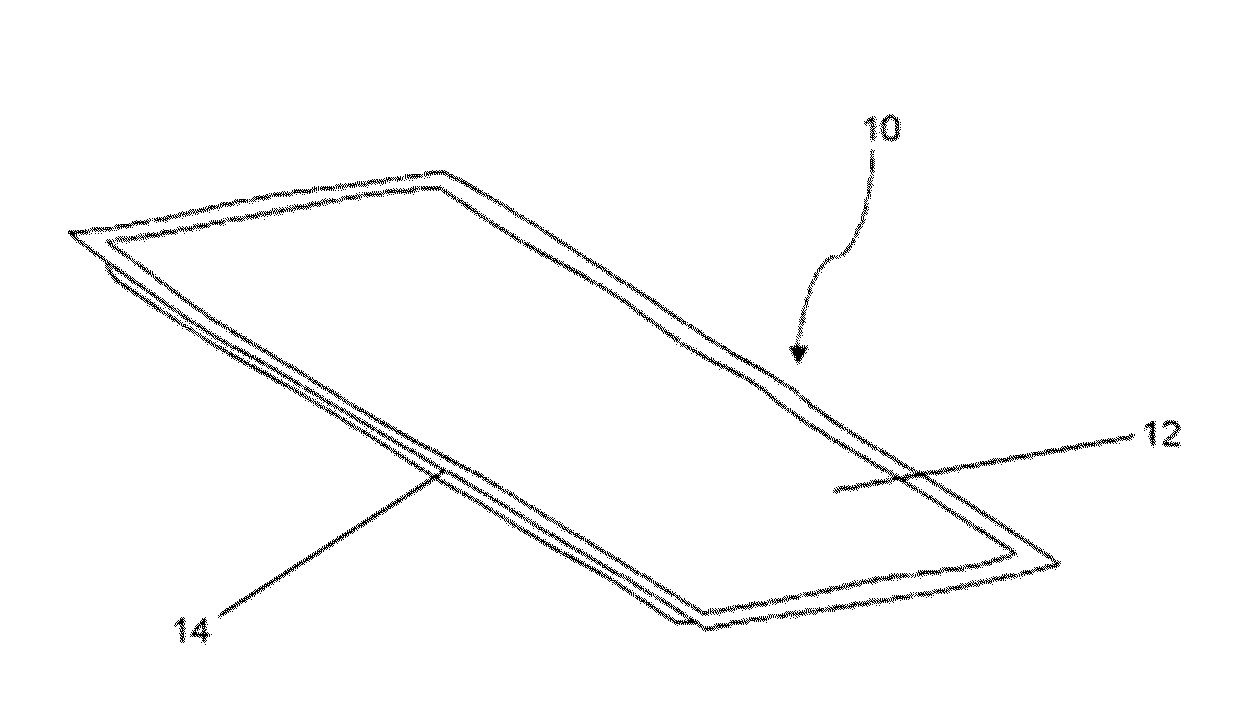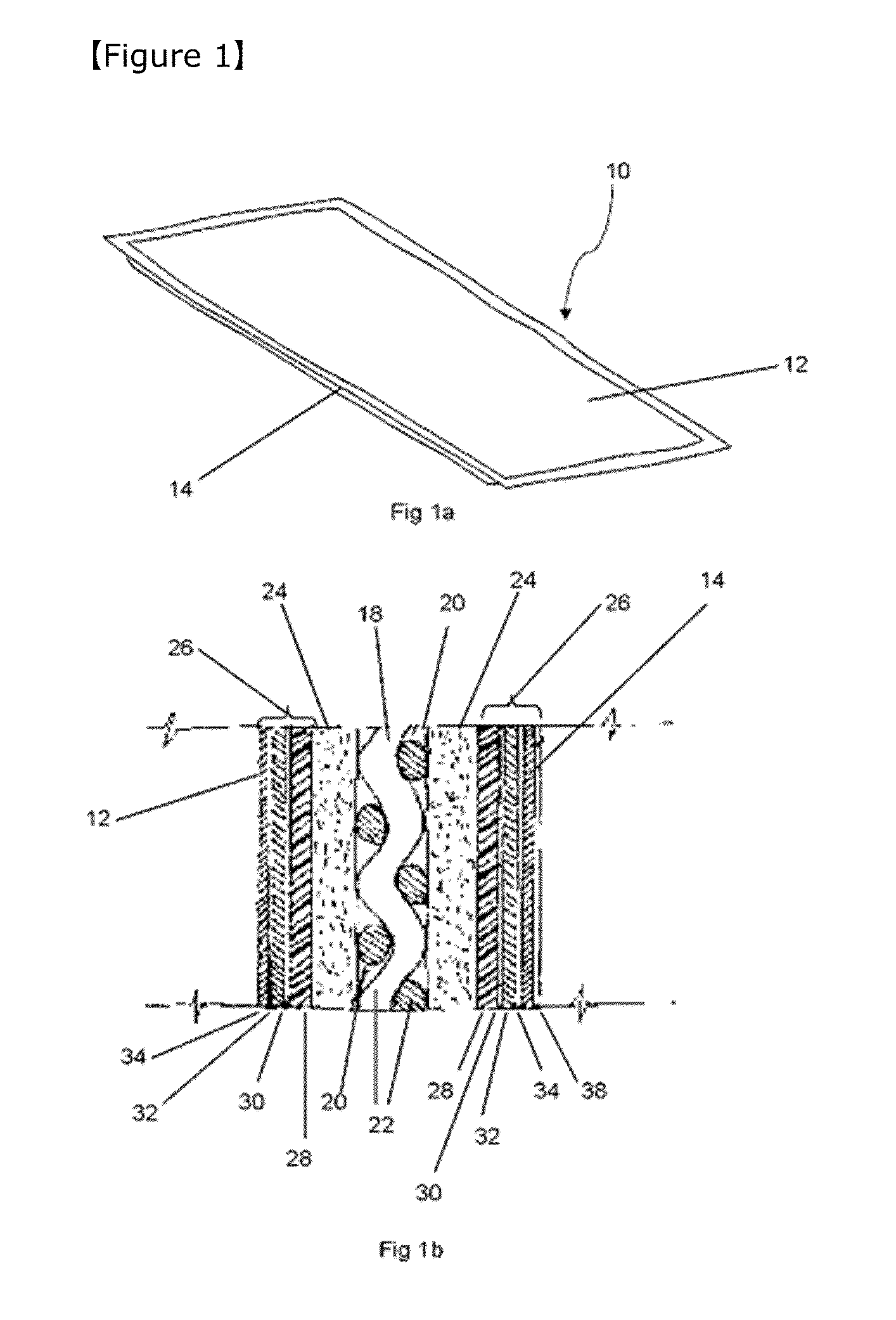Method for heat transfer and device therefor
a heat transfer device and heat transfer technology, applied in indirect heat exchangers, lighting and heating apparatus, reinforcement means, etc., can solve the problems of affecting the effective heat conduction, affecting the continuous performance of the heat exchanger, and accumulating heat, so as to increase the internal vapour pressure and good thermal conduction
- Summary
- Abstract
- Description
- Claims
- Application Information
AI Technical Summary
Problems solved by technology
Method used
Image
Examples
Embodiment Construction
[0043]The effectiveness of the wettable surface material used in our device may be demonstrated by showing in FIG. 5a the dry non-metallic fibre sheet and the wettability state of the fibre sheet having been contacted with liquid after the lapse of about one second as shown in FIG. 5b.
[0044]FIGS. 6a, 6b, 7a and 7b shall now be referred collectively. The typical general embodiment of the device according to our invention should comprise of the following 3 parts or components contained in a casing (50) which substantially defines the external dimensions of the device. The casing encloses hermetically the parts or components in a confined space therein.
[0045]The first part or component is an aggregate of fibres or sheet of fibres (60) with internal passages and holes capable of capillary transport of liquids. By “aggregate” we mean to include any suitable structure, form, shape or pattern of the fibres which may be aggregated, woven, spun or like physical treatment.
[0046]The fibres ha...
PUM
 Login to View More
Login to View More Abstract
Description
Claims
Application Information
 Login to View More
Login to View More - R&D
- Intellectual Property
- Life Sciences
- Materials
- Tech Scout
- Unparalleled Data Quality
- Higher Quality Content
- 60% Fewer Hallucinations
Browse by: Latest US Patents, China's latest patents, Technical Efficacy Thesaurus, Application Domain, Technology Topic, Popular Technical Reports.
© 2025 PatSnap. All rights reserved.Legal|Privacy policy|Modern Slavery Act Transparency Statement|Sitemap|About US| Contact US: help@patsnap.com



